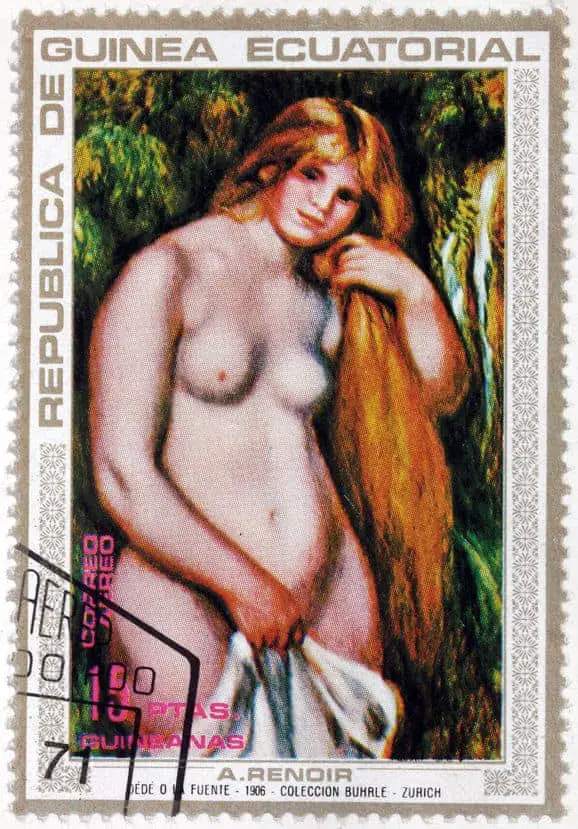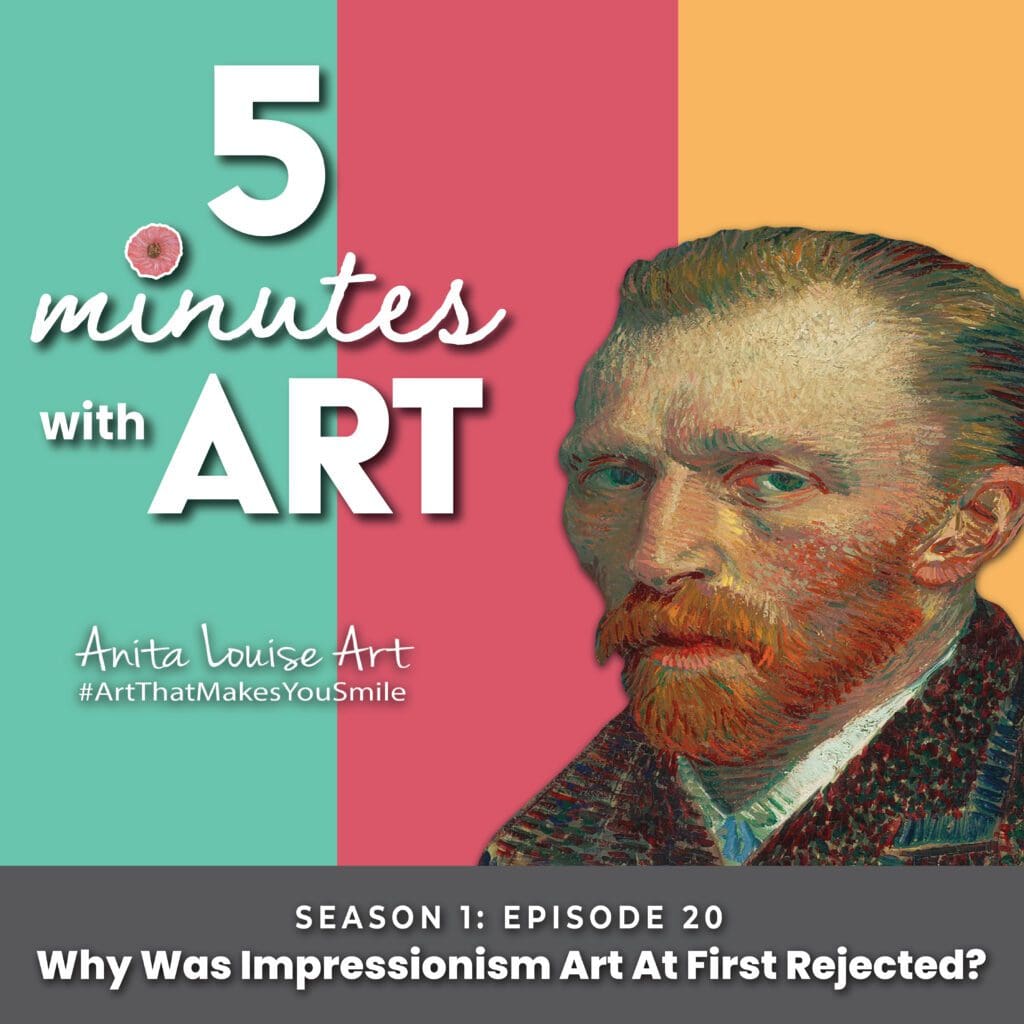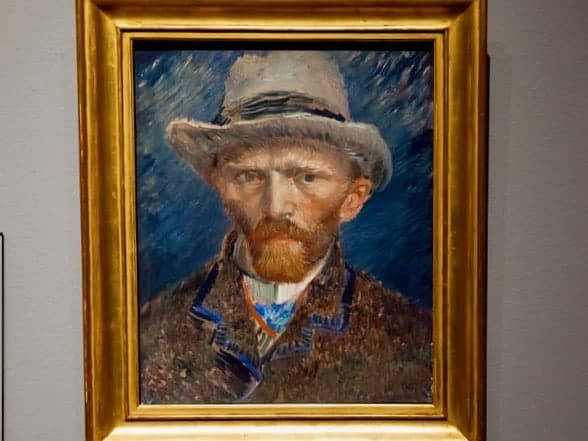I recently watched a movie about Vincent Van Gogh called At Eternity’s Gate, a beautiful movie about the life of Vincent Van Gogh. When I watched the movie, I thought, “Why were so many impressionist artists so widely rejected during their lifetime?”
During the emergence of impressionism art, fine art oil painting was an essential addition to the interior design of a home, especially for the affluent and the increasing arrival of the middle classes. For these art patrons, only some art styles were considered acceptable for them to use for the interior design of their home, and impressionism art did not fit into any of these culturally acceptable fine art categories.
Table of Contents
- Reasons Impressionism Art Was At First Rejected
- Frequently Asked Questions
- Related Questions
There are many reasons why impressionism art did not fit into any of the popular or acceptable fine art oil painting categories.
Reasons Impressionism Art Was At First Rejected
Impressionism Art broke from long-accepted artistic norms.
Impressionism art broke from the long-accepted art norms of the day. Impressionism art was almost considered messy and too abstract for many art patrons. It was a freestyle that did not have a realistic look that many oil paintings from that day thought was acceptable.
For example, fine art oil paintings had to have a realistic look from the norms of that time period. Suppose you had a portrait; it had to look like a person and be anatomically correct. A person’s skin had to be the actual skin color, and a still life of objects as flowers, vases, or fruit had to look like actual flowers, vases, or a bowl of fruit.
The norm of that day was that acceptable art subject matter was also somewhat limited. Many fine art oil paintings would show a person’s religious beliefs by painting a scene from the bible. There were some portraits and also landscapes and still life paintings. Even scenes from mythology were acceptable.
Edgar Degas said it very well when he said:
“A painting requires a little mystery, some vagueness, and some fantasy. When you always make your meaning perfectly plain you end up boring people”
Edgar Degas
Impressionism Art Didn’t Dit Into What Was Culturally Acceptable Art
What is interesting about this period was that nudity in art was acceptable as long as the paintings were from mythology. The fact they were from mythology somehow made nudity culturally acceptable.
Then, this group of renegade impressionist artists came along, changing what would have been culturally acceptable for the day. You can say they were pushing the cultural norms of society.
Where nudity was acceptable in the painting of mythology, the impressionism arts came, and they painted nudity in the form of a real live person. ‘That was culturally unacceptable and considered highly scandalous to the time period.

Impressionism Art Was The Start Of Art Distancing Itself From Reality
Impressionism art was the beginning when art started to distract itself from reality. A person’s face no longer has the colors of actual skin tones on their faces but may have various other colors. The landscape had changed to be bright colors that the artist saw in their imagination, not the reality of what was there. Art started to distance itself from the realistic fine art paintings of the day.
Impressionist artists were also not interested in trying to conform to the art of the day. In fact, many of them did just the opposite of that, such as Vincent Van Gogh. These artists continued to explore and paint this new style without real thought if they could sell a painting.
As Vincent Van Gogh said
“I dream my painting and I paint my dream.”
Vincent Van Gogh
Van Gogh painted his dreams as he saw them, and he did not care if those dreams were realistic paintings or not. And many people of the time found those dreams to be disturbing.

Listen To Our Podcast About Why Was Impressionism Art At First Rejected? by clicking here.

The Impressionists were changing art.
The public did not understand this new impressionist style of painting. They ridiculed the artists. Some paintings they even tried to vandalize. Many in public felt the artists were untalented as they saw them as having an almost childlike art style.
The invention of paint tubes allowed impressionist painters to go outside and paint in nature. This also gave them a chance to first-hand paint with the sun shining, so they could study light and color outdoors. They would study the sun’s light as it would change throughout the day and see how the colors could also vary with the sun. They were not limited to indoor workshops or study.
Also very different from the other artists of their day, the impression painted from what they felt, dreamed, or saw in their imaginations. They looked at colors and then painted the colors they saw. As Claude Monet said so beautifully in this quote:
“Try to forget what objects you have before you – a tree, a house, a field, or whatever. Merely think, ‘Here is a little square of blue, here an oblong of pink, here a streak of yellow,’ and paint it just as it looks to you, the exact color and shape, until it gives you your own impression of the scene before you”
Claude monet
Some of the impressionist artists saw great success in their lifetime. Claude Monet, for example, was able to see artistic and financial success. His family first rented and then later purchased a house and some gardens in Giverny.
By the 1890’s he was so successful he was able to build up his gardens, a greenhouse, a new studio, and a building with excellent light. As Monet’s wealth continued to grow, so did his garden. Some of his most famous paintings are from the water lilies he had in his garden.

The impressionist painters were and are a fantastic group of individuals and painters. They are amazing in that they put their art ahead of all else. They did not care what culturally acceptable norms of the time were; they painted because there was something inside them driving them every day to get out there and paint what they saw.
Because of them and this ability, they had to not care about the day’s norms we now have so many great and wonderful impressionist works of art that we can study, and we can receive inspiration from for our own art. This fantastic group of artists can teach us all important lessons that we need to believe in ourselves and our art, just like they did. This is their legacy to each of us.
Anita Louise Art is dedicated to art education, great artists, and inspiring others to find and create their art. We love art that uplifts and inspires. #ArtToMakeYouSmile! #ArtToMakeYouHappy!
If you want to see any of my art, you can find out more by clicking here. If you are interested in what inspires me and my paintings, you can discover more by clicking here.
We have a free newsletter and would love you to be part of our community; you can subscribe to the newsletter by clicking here. If you have any questions, I would be happy to talk to you anytime. You can reach me, Anita, by clicking here.
Subscribe to our Anita Louise Art YouTube Channel with great videos and information by clicking here.
Join us for our podcast “5 Minutes With Art.” Spend just 5 minutes a week with us to discover and learn about great art and artists. You can find out more about our podcast by clicking here.
Frequently Asked Questions
Was Impressionism considered a radical departure from traditional art styles?
Yes, Impressionism challenged conventional artistic techniques and perspectives, deviating from the realistic and detailed approach that was widely accepted in the art world. This departure caused skepticism among traditionalists.
Did the use of unconventional techniques in Impressionism contribute to its initial rejection?
Absolutely. Impressionist artists employed innovative techniques like loose brushstrokes, emphasis on light, and the depiction of everyday scenes. These methods were unconventional and often seen as a departure from the established norms.
Were societal expectations a factor in the rejection of Impressionism?
Certainly. During the emergence of Impressionism, societal expectations heavily influenced art preferences. The affluent and middle classes had specific expectations for interior design, and Impressionism didn’t align with the accepted fine art categories.
Did the subject matter of Impressionist paintings contribute to their rejection?
Yes, the choice of everyday scenes and ordinary subjects in Impressionist works was a departure from historical or mythological themes that were considered more “serious” in the eyes of the contemporary art establishment.
Were Impressionist artists rejected by art institutions and academies?
Many Impressionist artists faced rejection from established art institutions and academies, which held conservative views on artistic styles. The rejection from these influential entities hindered the recognition and acceptance of Impressionism.
Did the lack of initial commercial success contribute to the rejection of Impressionism?
Certainly. Impressionist works struggled to gain commercial success initially, as the public and art buyers were more inclined towards traditional art. Financial struggles and lack of patronage added to the challenges faced by Impressionist artists.
Were critics instrumental in the rejection of Impressionism?
Yes, art critics played a significant role. Many critics of the time dismissed Impressionist works, viewing them as unfinished or lacking in artistic skill. Negative reviews and critiques contributed to the overall rejection of the movement.
Did the unconventional exhibition practices of Impressionists contribute to their rejection?
The Impressionists often organized independent exhibitions outside of the traditional art venues. This unconventional approach was met with skepticism by the art establishment, contributing to the rejection of both the artists and their works.
Were there political or cultural reasons behind the rejection of Impressionism?
Yes, political and cultural factors played a role. The emergence of Impressionism coincided with a period of social and political change. The conservative elements in society viewed these new artistic expressions as a threat to established norms.
Did the personal lives of Impressionist artists affect the reception of their work?
In some cases, yes. The unconventional lifestyles of some Impressionist artists, along with their rejection of societal norms, influenced how their work was perceived. Society’s resistance to change extended beyond the canvas to the artists themselves.
Related Questions
When was the Impressionism art era?
The impressionism art movement started in France during the late 19th and early 20th centuries. According to the Britannica Encyclopedia, the main period is from 1867 to 1886.
Who are the major impressionist artists?
The major impressionism arts are Claude Monet, Pierre-Auguste Renoir, Edgar Degas, Paul Cezanne, Camille Pissarro, Edouard Manet, Berthe Morisot, Vincent Van Gogh, Mary Cassatt, Alfred Sisley, Georges Seurat, Gustave Caillebotte, Paul Gauguin, Frederic Bazille, Eugene Boudin, Armand Guillaumin, Childe Hassam, Henri Matisse, Theodore Robinson, Henri de Toulouse-Lautrec. Valentin Serov, and Paul Signac.

